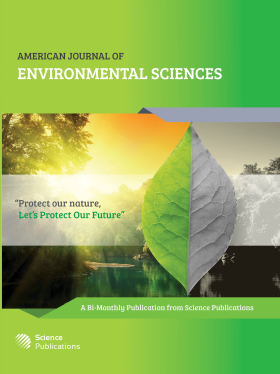Vulnerability and Pollution Risks in the Alluvial Aquifer of Tebessa-Morsott
Abstract
We studied the vulnerability and risks of pollution of the alluvial aquifer of Tebessa-Morsott that ranks amongst the major groundwater reservoirs of the region. The method used to asses groundwater vulnerability was the DRASTIC method, based on seven parameters that affect and control the groundwater flow: Depth to groundwater, Impact of the unsaturated zone, net recharge, aquifer media, hydraulic conductivity, soil media, topography. These parameters were obtained from data field, synthetic maps relative to the area considered and then identified within each cell after discretization of the studied area in regular square cells. For each cell, DRASTIC rating for each parameter was multiplied by the DRASTIC weight for that cell and summed to determine the DRASTIC index. A detailed vulnerability map was obtained, showing four classes of potential pollution of the aquifer. Check analysis of the quality of groundwater within these zones are carried out in order to assess the risks of contamination. Pollution by nitrates occurs especially in the wells of low depth, but also in certain drillings for drinking water, whereas bacteriological pollution is observed only in the domestic wells.
DOI: https://doi.org/10.3844/ajessp.2007.219.224

- 5,332 Views
- 5,098 Downloads
- 3 Citations
Download
Keywords
- DRASTIC
- Vulnerability
- Pollution
- Groundwater
- Tebessa-Morsott
- Algeria
